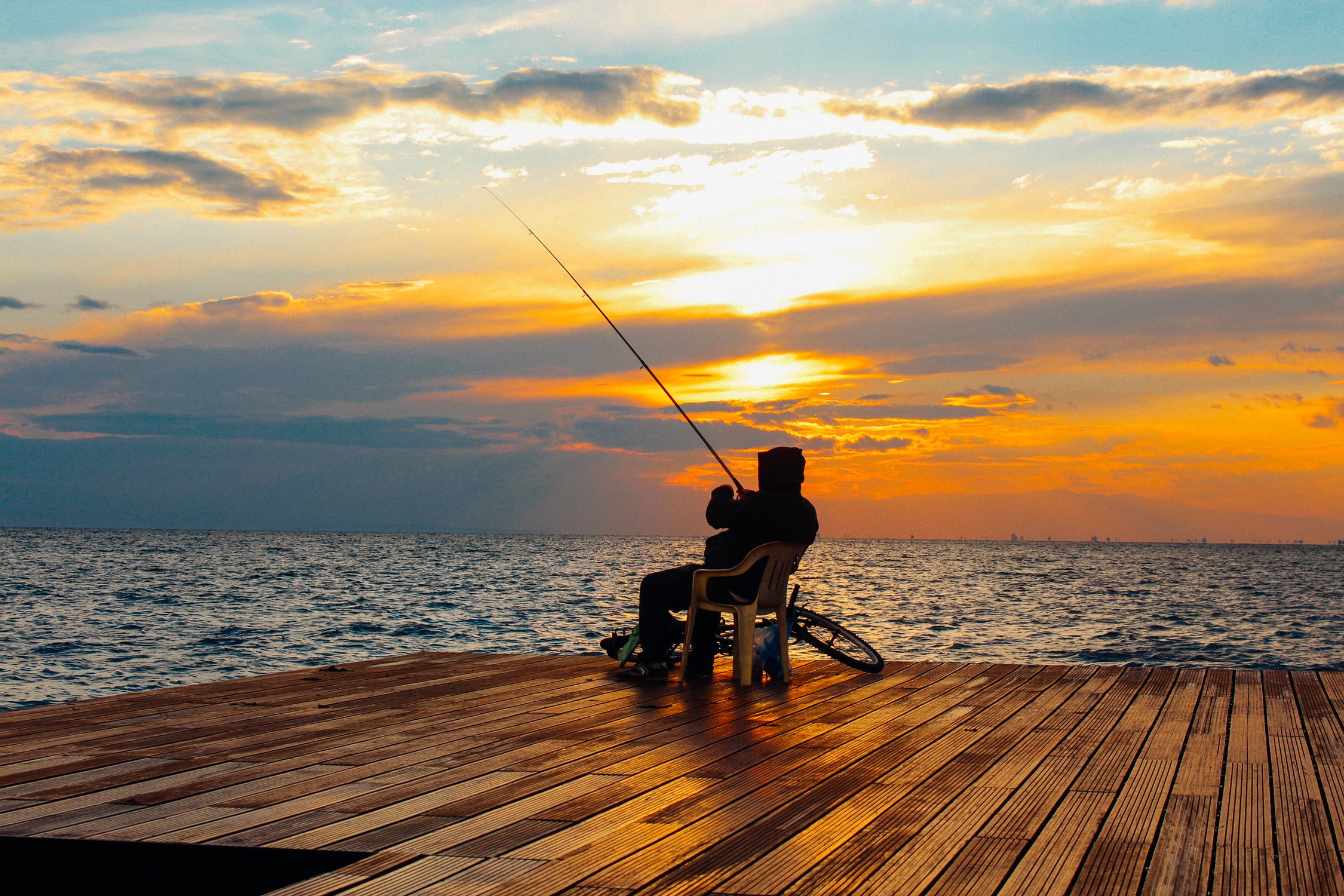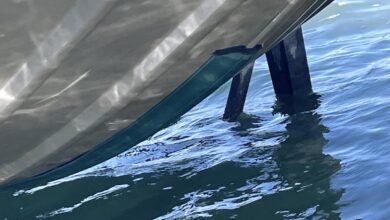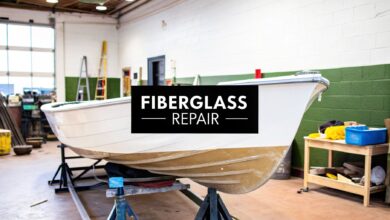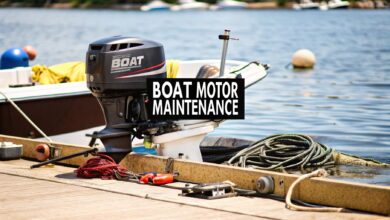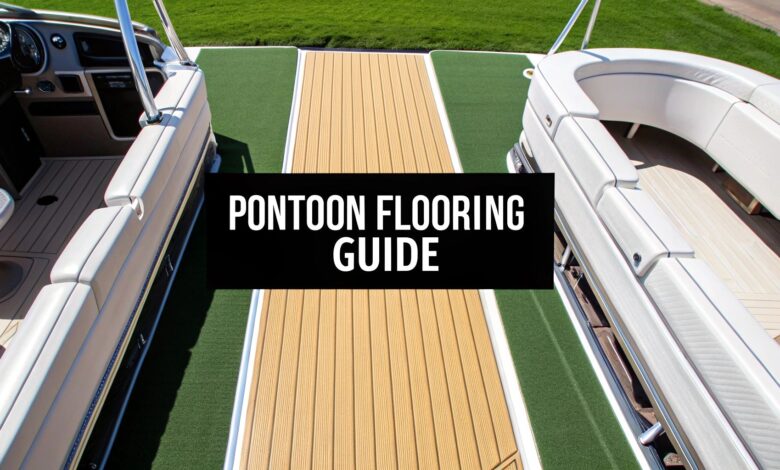
Giving your pontoon a new floor is one of the biggest upgrades you can make. It completely changes the boat's look, feel, and even how you use it. Most people choose between pontoon boat flooring options like marine vinyl, carpet, or EVA foam.
Getting this choice right is key to your long-term happiness on the water. It affects everything from comfort and cleanup to your boat's resale value.
Understanding Your Flooring Choices
Picking the right flooring isn't just about looks. It's about finding a material that truly fits your boating lifestyle. Think about your local climate, what you do on your boat, and your budget.
Nailing down these basics will help you compare the different materials on the market. If you want to dig deeper, our guide on choosing boat flooring for your vessel is a great resource.
The demand for quality boat decking is on the rise. The marine flooring market was valued at USD 3.7 billion in 2024. It is expected to jump to over USD 5.8 billion by 2033.
This boom is driven by boat owners who want stylish, tough materials. You can find more data on these trends if you're curious about where the industry is heading. (Learn more about marine flooring market projections on verifiedmarketreports.com).
To help you get started, here’s a quick-glance table breaking down the most popular choices.
Quick Comparison of Pontoon Flooring Materials
This table offers a high-level overview of the main flooring options. Use it to quickly see which material might be the best fit for your pontoon.
| Flooring Type | Best For | Average Cost (Sq. Ft.) | Key Feature |
|---|---|---|---|
| Marine Vinyl | All-around use, easy cleaning, and durability | $6 – $15 | Waterproof and low-maintenance |
| Marine Carpet | Comfort, budget-friendliness, and cooler climates | $2 – $6 | Soft feel and excellent grip |
| EVA Foam | Cushioning, watersports, and custom designs | $8 – $20 | Superior comfort and non-slip surface |
This gives you a starting point. Now, let's dive into the specifics of each material so you can make a fully informed decision.
Marine Vinyl Flooring: The Modern Standard
If you've been on a newer pontoon boat, you've likely stood on marine vinyl. It offers a fantastic blend of durability, style, and practicality. Fighting off moisture and mildew is a constant battle, and this is where vinyl truly shines.
Spills, fish guts, and muddy footprints are no match for it. A quick hose down with some mild soap is usually all it takes to make it look new again.
You'll find two main types of marine vinyl: classic sheet style and woven vinyl. Woven vinyl has a high-end, fabric-like texture that feels great and offers superior traction. Its design is more breathable, which helps moisture evaporate instead of getting trapped underneath.
Durability and Style Combined
While many boaters love the classic softness of carpet, vinyl offers a sleek, modern alternative. It's undeniably easier to keep clean over the long haul.
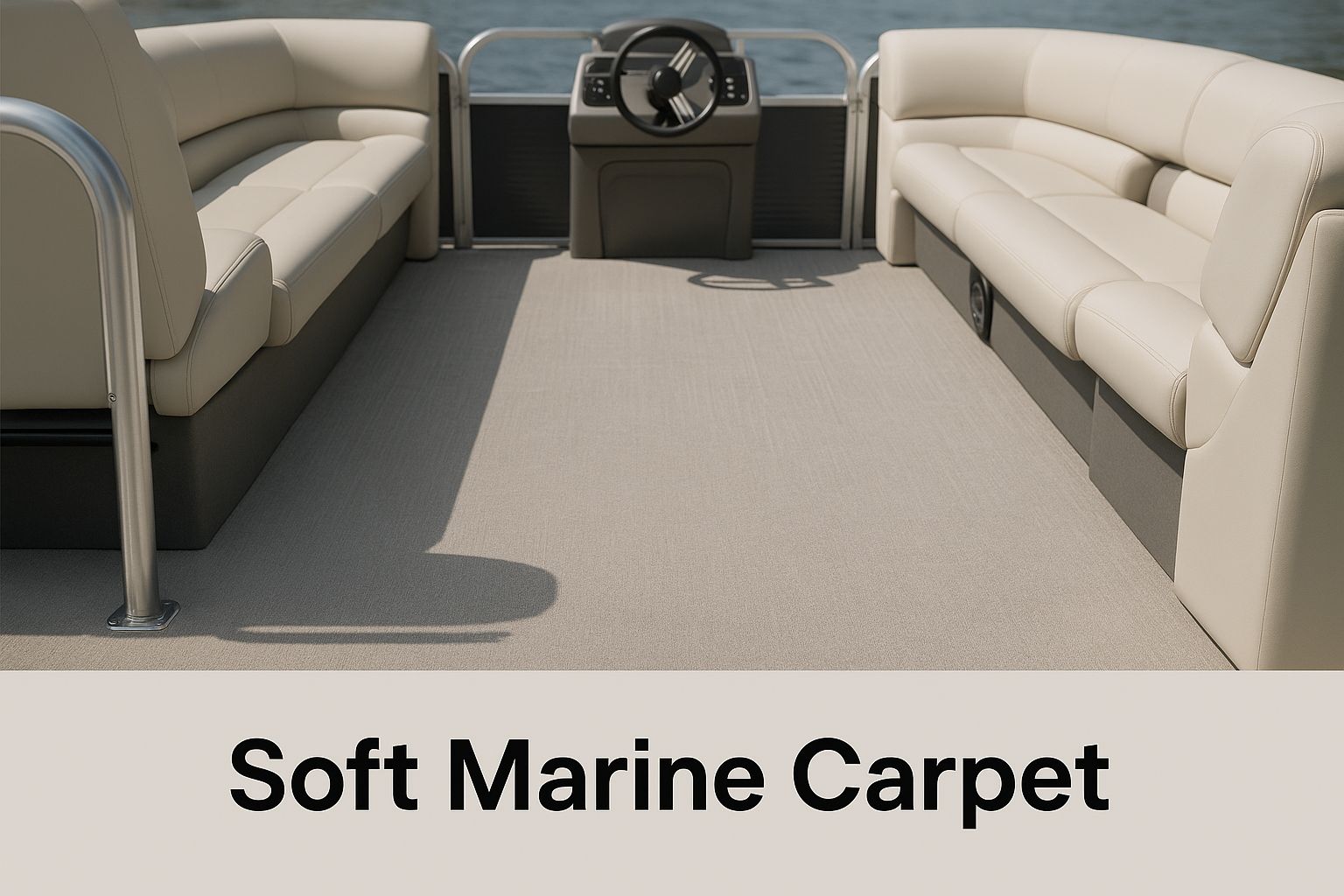
Of course, vinyl isn't perfect. Its biggest downside is that it can get seriously hot under the summer sun, especially darker colors.
We've all done the hot-deck-dance. The easiest way to avoid this is by picking lighter colors like beige, gray, or white. They reflect a lot more heat and stay much more comfortable. For the best of both worlds, some owners use snap-in carpet runners in high-traffic zones on those really scorching days.
This simple color choice makes marine vinyl a practical and versatile flooring. It works for just about any pontoon owner, from serious anglers to families on a lazy cruise.
2. Marine Carpet: The Classic Comfort Option
For many long-time boaters, nothing feels quite right underfoot except marine-grade carpet. It's been a go-to pontoon boat flooring for decades. The soft, forgiving texture is just plain comfortable for families with kids playing on the deck.
Beyond that cozy feel, carpet offers fantastic non-slip traction, even when wet. It also muffles engine noise and the sound of waves, leading to a quieter day on the water.
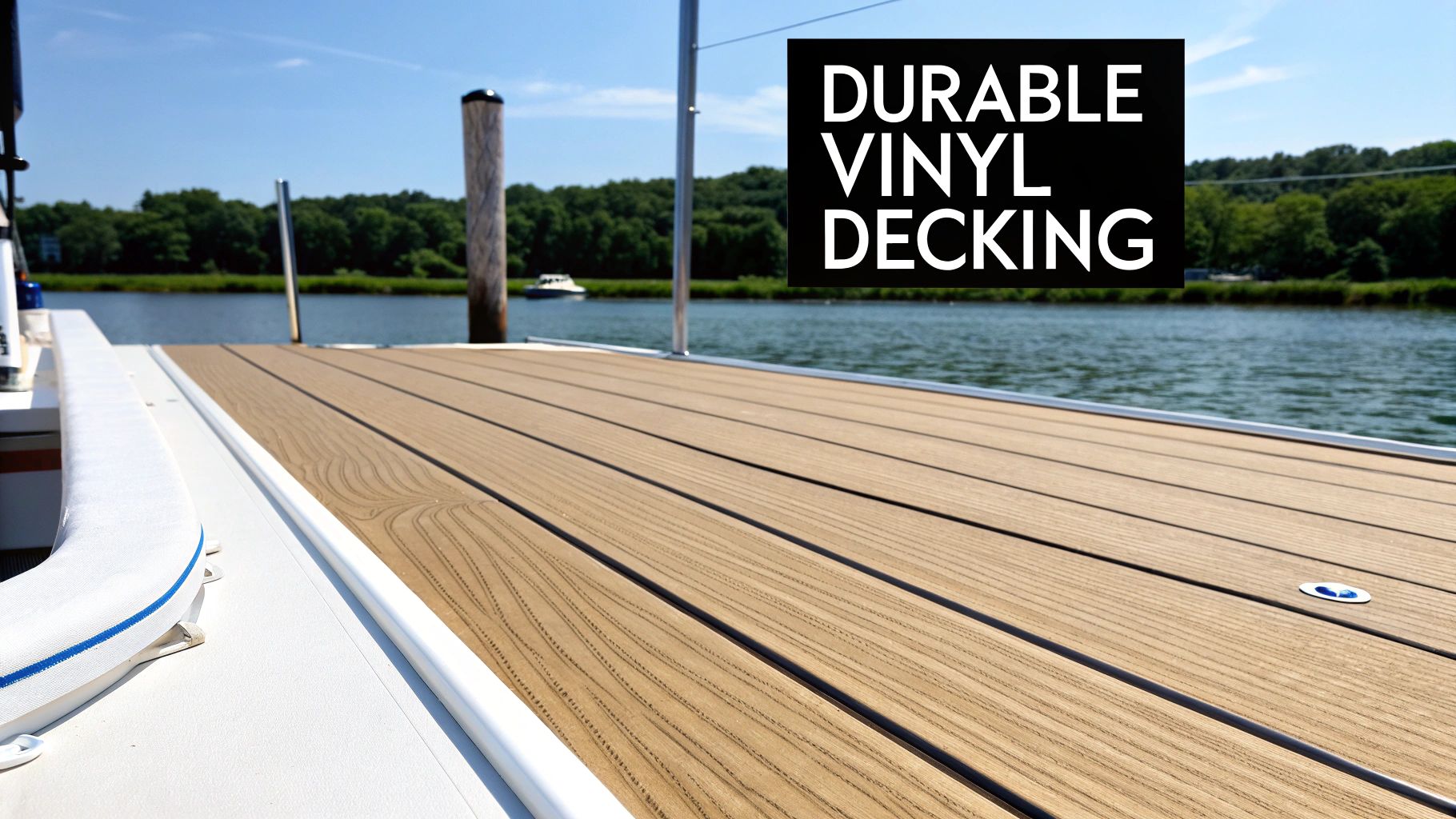
If you're picturing the musty carpets of the past, think again. Today’s marine carpets are engineered with advanced synthetic fibers. They are designed to resist mold, mildew, and fading from harsh UV rays.
These improvements are part of a bigger trend in the boat floor covering market. The market was valued at USD 1.2 billion in 2023. You can discover more insights about the boat floor covering market on dataintelo.com.
Maintenance and Ideal Use Cases
Even with these modern upgrades, a little routine care goes a long way. You'll want to vacuum it regularly to get rid of sand and dirt. This prevents the pile from wearing down over time.
For the inevitable spills or fish-related messes, a simple mix of mild soap and water usually does the trick. The absolute most critical step, though, is allowing the carpet to dry completely. This prevents any chance of mildew finding a home in the carpet's backing.
So, who is marine carpet really for? It’s an unbeatable choice in cooler climates where the deck won't get scorching hot. If comfort and cost are top priorities, carpet is a fantastic option.
EVA Foam: The Go-To for Cushion and Custom Style
When you think about premium comfort, EVA foam flooring should be top of mind. The main draw is its incredible cushioning. EVA (Ethylene-vinyl acetate) foam creates a soft deck that's easy on your feet and back.
This is a game-changer for families or anyone who stands a lot, like anglers. Safety is another big win here. The material has a closed-cell structure, which means it won’t soak up water.
This cuts down on the risk of mold and mildew. Plus, the textured surface provides fantastic non-slip traction, even when wet.
What really sets EVA foam apart is the level of personalization it offers. Using CNC machines, it can be precision-cut to fit every nook and cranny of your deck perfectly. You can also add custom logos, unique patterns, or even a classic faux-teak look to create a boat that's truly your own.
Performance and Ideal Use
While it excels in comfort, EVA foam isn’t the toughest material out there. It’s more susceptible to punctures from sharp objects like fishing hooks or pet claws.
Its rising popularity is part of a larger trend. Owners in North America and Europe are looking for high-end comfort and modern design. You can see the data on boat flooring market trends for more insight.
Comparing Cost and Installation
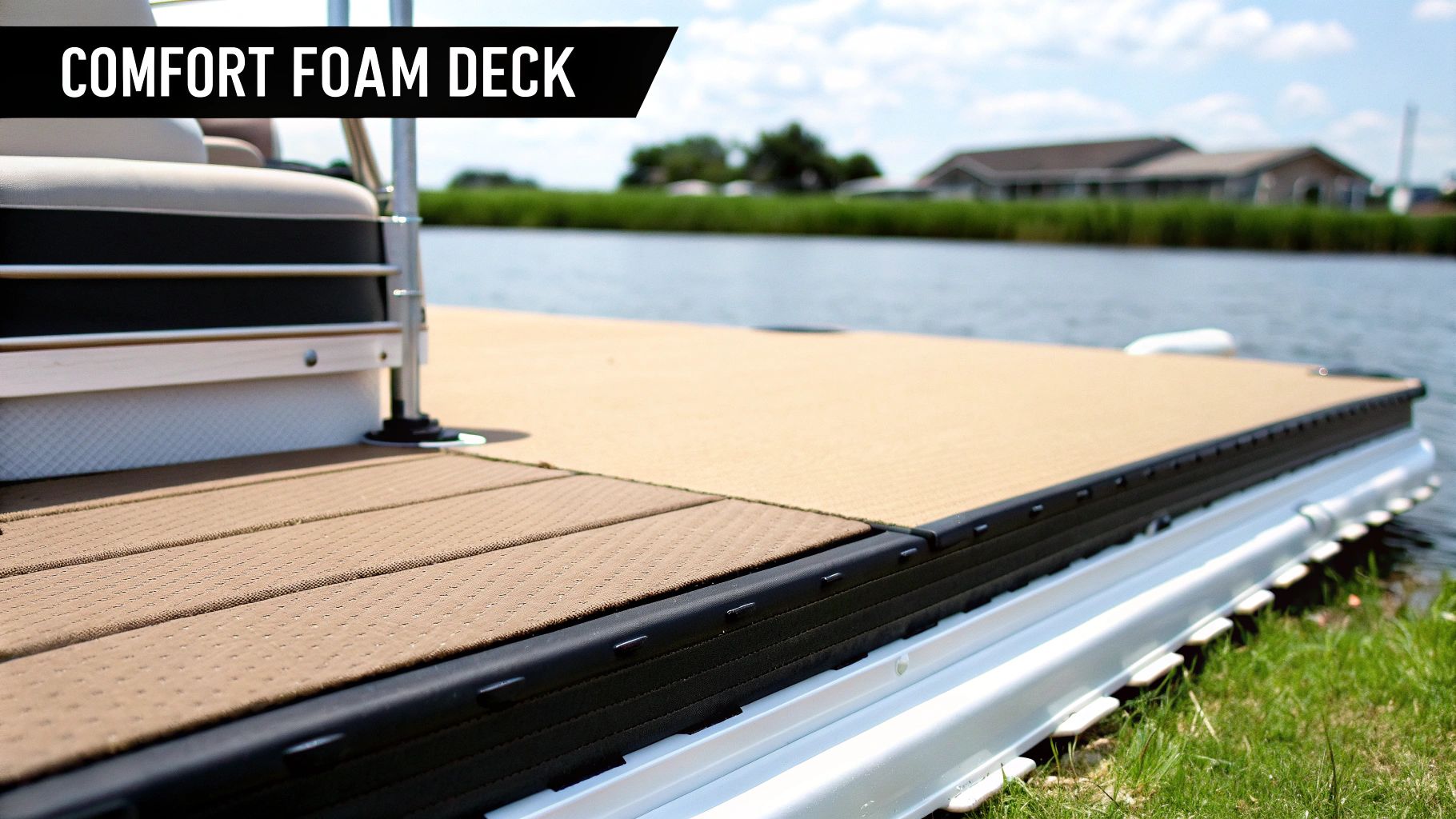
When you upgrade your pontoon's deck, the investment is more than just the material's price. You must factor in adhesives, tools, and your time versus hiring a pro. Thinking through the project's entire scope helps avoid surprise costs.
Material costs vary quite a bit. Marine carpet is your most budget-friendly route, at $2 to $6 per square foot. Premium options like woven vinyl and EVA foam range from $8 to $20 per square foot.
For a starting point, you can use general material cost predictors to get a ballpark figure.
The biggest factor influencing your total cost is whether you opt for a DIY installation or hire a professional. While doing it yourself can save hundreds or even thousands in labor, it demands time, patience, and careful surface preparation.
Proper prep work is non-negotiable for a lasting floor. This means stripping off all old flooring and adhesive, cleaning thoroughly, and fixing any soft spots. A solid foundation is critical for your deck.
It's a similar principle to deciding if keel guards are actually worth it. Investing in the fundamentals always pays off.
Frequently Asked Questions
When sorting through pontoon flooring options, a few common questions always pop up. Let's tackle them so you can feel confident in your final decision.
What Is the Most Durable Pontoon Boat Flooring?
Woven marine vinyl usually takes the crown for durability. It's engineered to fight off moisture, mildew, UV rays, and stains. That resilience means you get a long-lasting deck with very little upkeep.
For the average boater who wants toughness and a modern look, woven vinyl is hard to beat. It holds up well to constant foot traffic and the general wear and tear of a season on the water.
What Is the Coolest Pontoon Flooring for Hot Climates?
If you boat in a hot, sunny area, you know how scorching a deck can get. Lighter-colored marine carpet or EVA foam tends to stay much cooler than dark vinyl. Dark shades can really soak up the sun's heat.
Think about choosing a light gray, beige, or even white flooring. It makes a massive difference in comfort on those blistering summer days. This helps you avoid the dreaded "hot-deck dance" when you're walking around barefoot.
Can I Install New Pontoon Flooring Myself?
Absolutely. Many boat owners handle their own flooring installation. The real secret to a great finish isn't the installation itself, but the prep work.
You must be meticulous about removing old flooring and cleaning the deck. A DIY project is doable if you have patience and pay attention to details. But hiring a pro is a surefire way to get a flawless result.
How Do I Clean My Pontoon Boat Flooring?
The cleaning process changes a bit depending on your material. However, the basics are pretty straightforward.
- Marine Vinyl & EVA Foam: A simple mix of mild soap and water with a medium-bristle brush is usually all you need.
- Marine Carpet: You'll want to vacuum it regularly to get rid of sand and dirt. For spills, treat them as soon as you can with a spot cleaner.
The most important thing is to stay away from harsh chemicals like bleach. They can break down the flooring material and its backing over time.
For more expert guides and in-depth reviews on all things boating, from maintenance projects to the latest gear, explore the resources at Boating Articles. Find everything you need to make your time on the water better at https://boating-articles.com.
